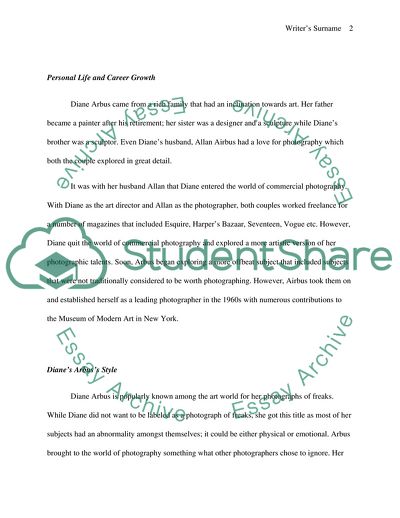Cite this document
(Analysis of Diane Arbus Photographs Coursework Example | Topics and Well Written Essays - 1500 words, n.d.)
Analysis of Diane Arbus Photographs Coursework Example | Topics and Well Written Essays - 1500 words. https://studentshare.org/performing-arts/1772793-select-a-photographer-to-research-and-write-about
Analysis of Diane Arbus Photographs Coursework Example | Topics and Well Written Essays - 1500 words. https://studentshare.org/performing-arts/1772793-select-a-photographer-to-research-and-write-about
(Analysis of Diane Arbus Photographs Coursework Example | Topics and Well Written Essays - 1500 Words)
Analysis of Diane Arbus Photographs Coursework Example | Topics and Well Written Essays - 1500 Words. https://studentshare.org/performing-arts/1772793-select-a-photographer-to-research-and-write-about.
Analysis of Diane Arbus Photographs Coursework Example | Topics and Well Written Essays - 1500 Words. https://studentshare.org/performing-arts/1772793-select-a-photographer-to-research-and-write-about.
“Analysis of Diane Arbus Photographs Coursework Example | Topics and Well Written Essays - 1500 Words”. https://studentshare.org/performing-arts/1772793-select-a-photographer-to-research-and-write-about.


